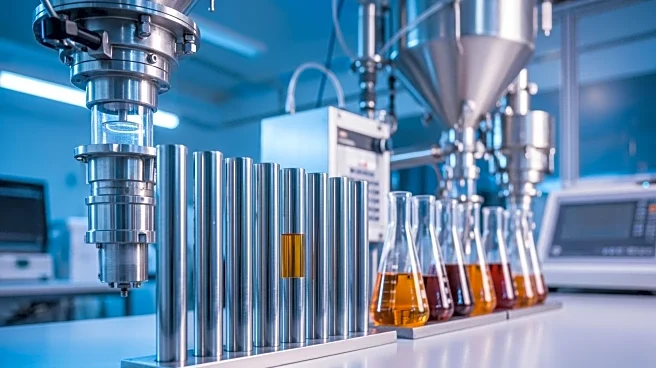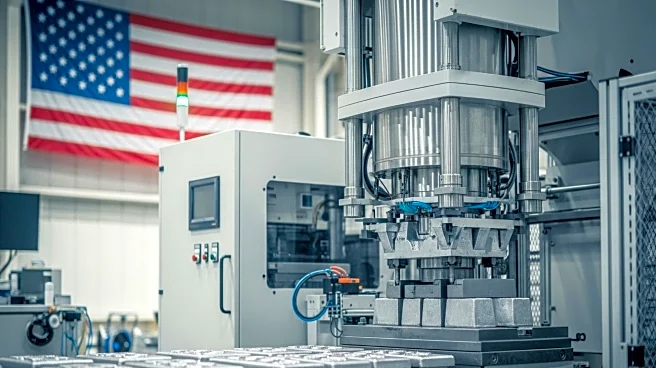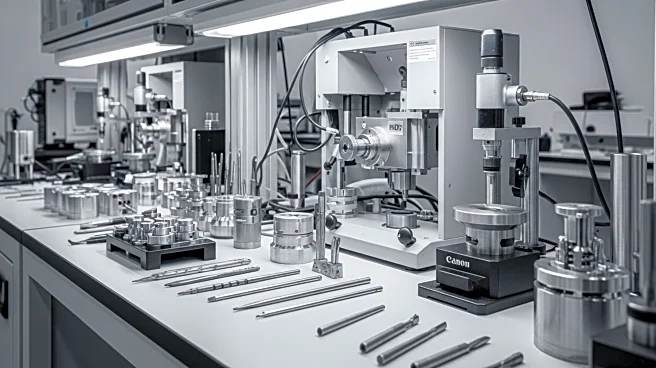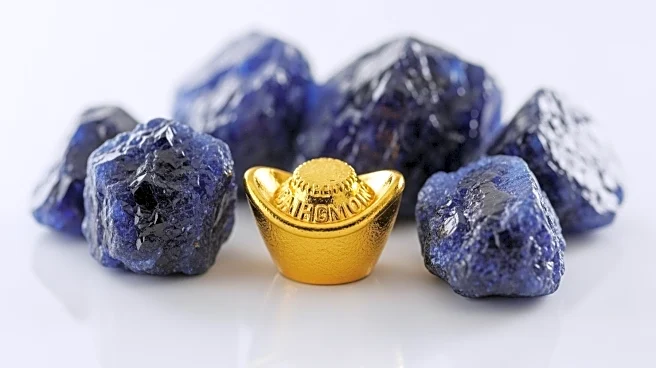What's Happening?
Locksley Resources has announced promising results from initial metallurgical testwork at its Mojave Project in the United States, aimed at establishing a domestic mine-to-market antimony supply chain. The testwork, conducted on a composite sample from the Desert Antimony Mine prospect, demonstrated effective recovery of stibnite, producing a concentrate with over 30% antimony in most tests. The company plans to further refine the concentrate to achieve a grade exceeding 50% antimony. Locksley is collaborating with Rice University to explore green hydrometallurgical extraction methods and the use of antimony-based materials in energy storage applications.
Why It's Important?
The development of a domestic antimony supply chain is significant for the U.S., as antimony is a critical mineral used in various applications, including flame retardants and energy storage. Locksley's initiative could reduce reliance on foreign sources, enhance national security, and support the U.S. economy by creating jobs and fostering technological advancements. The partnership with Rice University highlights the potential for sustainable extraction methods, aligning with broader environmental goals and innovation in material science.
What's Next?
Locksley Resources plans to continue testwork to improve stibnite recovery and concentrate grade, with subsequent regrind and cleaning stages. The company will provide a sample to Rice University for further extraction testwork using DeepSolv methodology. Locksley aims to produce antimony metal ingot, antimony oxide, and antimony trisulphide through pilot testing, advancing its strategy to supply antimony domestically.
Beyond the Headlines
The focus on green extraction methods reflects a growing trend towards sustainable mining practices, which could set a precedent for other mineral extraction projects. The collaboration with academic institutions like Rice University may drive innovation in the field, potentially leading to breakthroughs in energy storage technologies.











